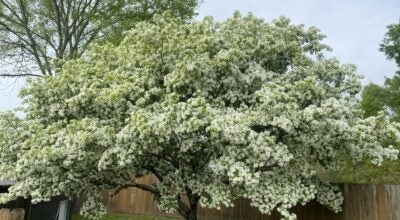Sooty mold in the landscape and garden
Published 1:20 am Sunday, June 30, 2013
In the summer months many landscape plants develop a black substance on the leaf surface, commonly referred to as sooty mold.
Sooty mold is the name applied to a combination of several species of fungi that occur on leaf surfaces leaving a black and sooty appearance. The mold develops the black covering over the surface by the threadlike growth (mycelium) of the fungi. The fungi that cause sooty mold do not actually infect the plant because the fungi persist only on the surface. However, although the sooty mold does not infect the plant it does act as a barrier against light penetration into the leaf, which is required for photosynthesis. As a result, heavy masses of sooty mold on the leaf surface can affect the vigor of the plant.
The sooty mold feeds on honeydew which is plant sap that is excreted by insects feeding on foliage and plant parts. The honeydew is comprised of sugars, which are generated by the plant for energy storage, so the fungi feed on the honeydew to secure the sugar for energy. Due to the sugary content of the honeydew, the substance is sweet and sticky. Sooty mold can also grow on surfaces other than leaves and plant surfaces. Commonly, sooty mold is prevalent on structures or objects that are beneath or near to plants susceptible to sooty mold. The honeydew discharged by the insects is dispersed not only on the plant surface but on other surfaces that are below the plant which leads to a sticky surface that oftentimes develops sooty mold.
Several ornamental plants, fruit trees and vegetable crops can develop sooty mold, including crape myrtles, hollies, camellias, privets, oaks, pecans, hickories, figs, pears, citrus, peaches, and tomatoes to name a few. Along with the diverse group of plants that can have sooty mold development, many insects are responsible for the honeydew residue which leads to the sooty mold development. Insects associated with honeydew excretion and sooty mold are the sucking insects, which include aphids, psyllids, leafhoppers, whiteflies, soft scales and mealybugs.
In order to manage sooty mold, the insect populations must be controlled. Controlling the insect feeding eliminates the presence of honeydew therefore removing the food source for the sooty mold. To control the insect populations, an insecticide should be applied. When applying any pesticide, always read and follow the label.
This article was compiled by Scotty May, Assistant Extension Agent (ANR) for Washington Parish. For more information concerning this article or related topics, please contact the Washington Parish Extension Office at 985-839-7855.






